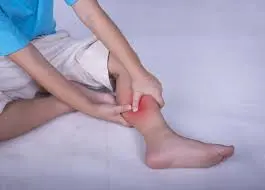The elbow joint is a complex hinge-type synovial joint that connects the upper arm to the forearm. It plays a critical role in the movement and function of the arm, enabling activities such as lifting, pushing, pulling, and fine motor skills. This essential joint supports the range of motions required for daily tasks, involving bending the forearm (pronation and supination) and bending and straightening the arm (extension). The arm’s ulna, radius, and humerus. The elbow joint is classified as a synovial joint in terms of structure. Introduction These joints, which unite the upper arm to the forearm, are called elbows. The skeletal system includes every joint in your body, including your elbows. Elbow joints fall under the structural category of synovial joints. This vital joint allows the perform various motions necessary for daily tasks, such as rotating the forearm (pronation and supination) and bending and straightening the arm (extension). The Anatomy of elbow…










